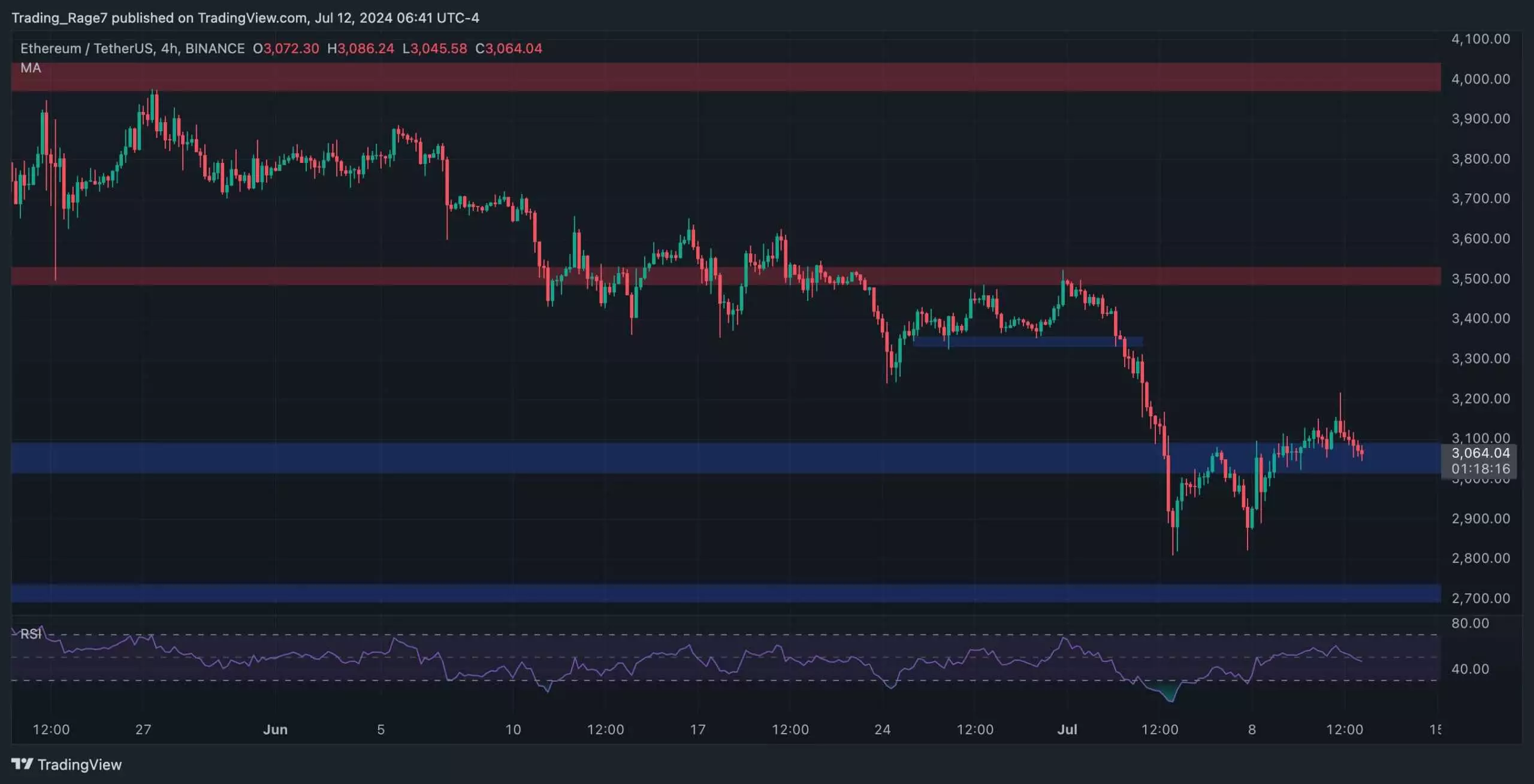Ethereum’s price has experienced a significant drop recently, particularly after facing resistance at the $4,000 level for the second time. Looking at the daily chart, it is clear that the price has been forming lower highs and lows ever since failing to break through the $4,000 resistance. Additionally, the market has broken below the 200-day moving average, hovering around the $3,100 mark. Despite a current retest of the 200-day moving average, the price seems to be facing rejection towards the downside. As a result, there is a high likelihood of the cryptocurrency dropping further towards the $2,700 support level in the short term.
Short-Term Outlook
Taking a closer look at the 4-hour chart offers more insight into the recent price action. The ongoing downtrend has intensified in recent times, with the market briefly dipping below the $3,000 support level. However, following an oversold signal from the RSI, the price managed to climb back above the mentioned support zone. Yet, there seems to be a lack of momentum for the price to continue its upward trajectory, signaling a potential deeper decline towards the $2,700 area.
Capitulation Phase
As Ethereum continues to face a downtrend in the market, analysts have been vigilant in searching for signs of capitulation that could suggest a potential bottom. One of the metrics being closely monitored is the Ethereum Exchange Reserve, which tracks the amount of ETH held in exchange wallets. An increase in this metric indicates potential selling pressure, while a decrease signifies a reduction in supply. After briefly breaking below the $3,000 level, the exchange reserve metric has surged above its 30-day moving average. This surge could be interpreted as the beginning of the capitulation phase, as many investors’ stop-loss orders were likely placed below the $3,000 level.
Ethereum’s recent price drop presents several challenges for traders and investors alike. With the possibility of further decline towards the $2,700 support level looming, it is essential for market participants to closely monitor key technical indicators and market developments. As the cryptocurrency market remains highly volatile, adapting to changing conditions and having a comprehensive risk management strategy are crucial for navigating through uncertain times in the market.














Leave a Reply